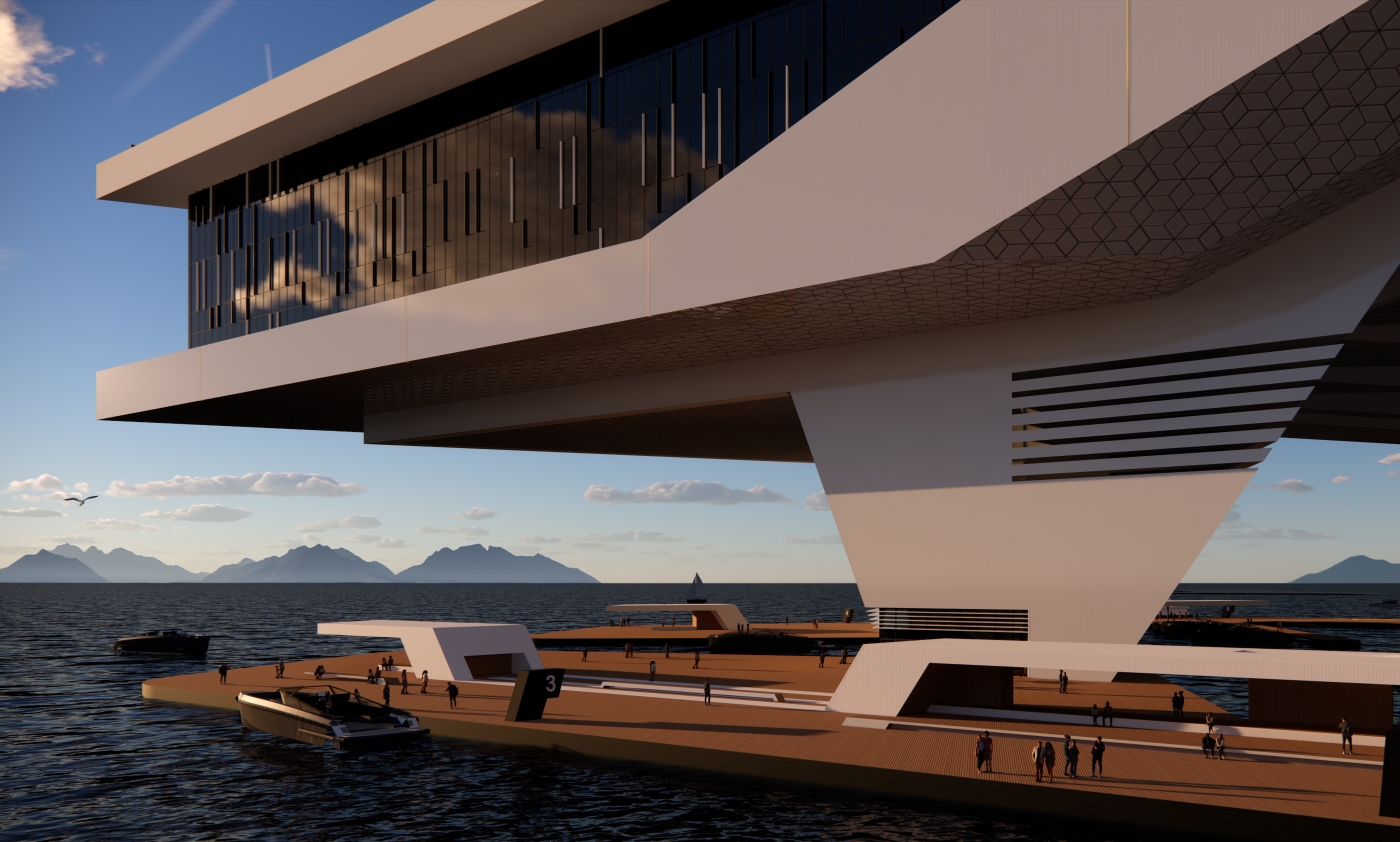A Green Energy Hub
Seventy percent of the earth’s surface is water, oceans, and seas, representing a vast, untapped resource of clean, renewable energy. The potential from exploiting this energy is huge and offers significant prospects in addressing our global energy needs while mitigating the impact of climate change.
While sustainable architecture focuses on minimising harm and optimising resource efficiency, regenerative architecture takes a more proactive and holistic approach by striving to create buildings that produce more energy than they consume and have a positive impact on their surroundings.

Drawing inspiration from regenerative principles, this ambitious architectural concept attempts to unlock the limitless potential of marine energy while creating a multifunctional destination, offering visitors a unique and immersive experience that fosters an appreciation for the natural world while advancing scientific knowledge.
A Sea Terminal, an energy hub, and a research facility featuring observation decks, underwater restaurants and educational exhibits, highlighting marine conservation and renewable energy technologies. Below sea level, an artificial reef will regenerate marine life and increase local biodiversity.
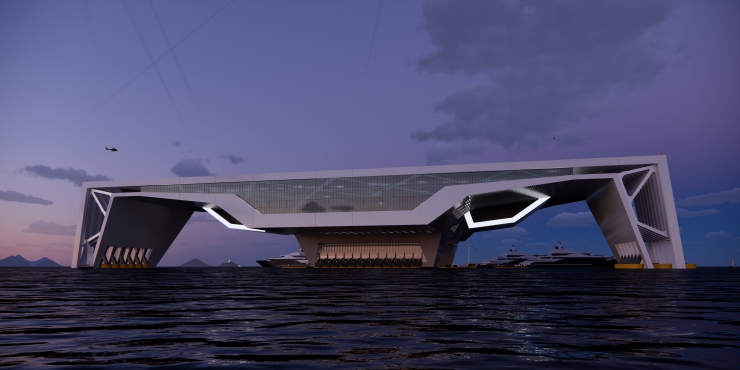
Initially designed to be located in the Aegean Sea in Greece however as a concept is applicable to a number of locations around the world.
As a Sea Terminal, the facility will serve as a transport hub for international ferries and cruise ships from around the world as well as for the local and regional ferries and private yachts, seamlessly connecting thousands of Greek islands that dot the Aegean archipelago. A proposed Vertiport at the roof level will serve visitors arriving by eVTOL (electrical vertical take-off & landing) vehicles.
The Aegean Sea Terminal is a self-sustaining facility; harnessing solar, wind and wave power to meet its energy needs and autonomous food production through permaculture and aquaculture. Additionally, the terminal envisions self-sufficiency in water management by utilizing rainwater harvesting and desalination techniques.
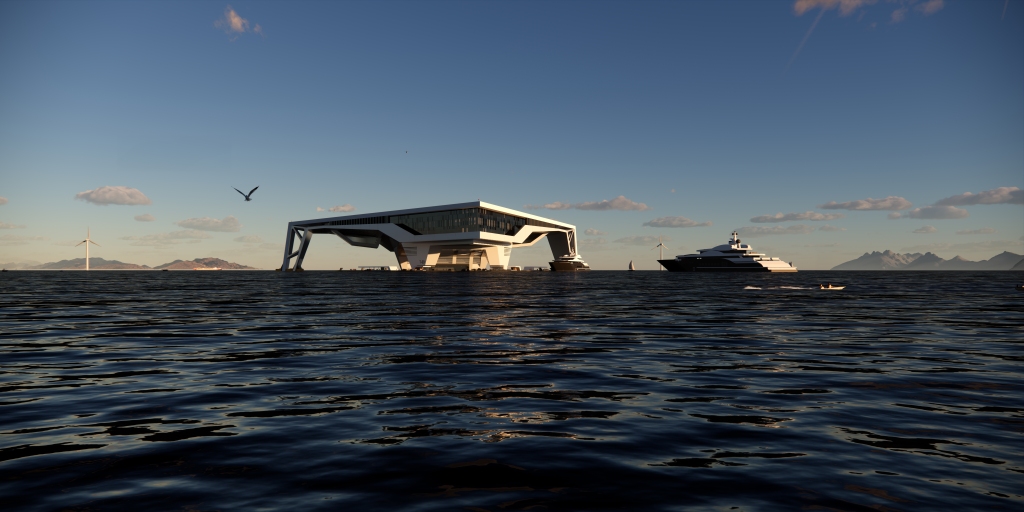

Green Energy Hub
Over 100,000sqm of high-efficiency solar panels on the roof would convert solar energy into electricity, which can be used directly or stored for later use. Wave Energy Converters positioned along the perimeter of the structure capture the energy of waves and convert it into usable power. The structure is equipped with a variety of wind turbines to harness the power of offshore winds. Underwater turbines capture the kinetic energy of tidal movements/currents and convert it into clean energy. Energy storage systems could store this excess energy and enable efficient energy management and distribution, supplying clean energy to remote coastal areas or nearby islands, promoting their development, and reducing reliance on fossil fuels.


Future Technologies Research Centre
A testbed for emerging renewable technologies; Companies and researchers could use the structure to test and refine their inventions, accelerating the deployment of promising clean energy solutions. This could involve studying renewable energy innovations, advanced materials, oceanic engineering, and sustainable resource extraction methods, providing a platform for collaboration and experimentation.
Oceanography and Marine Science facilities
Ocean Data Collection and Research: A facility dedicated to scientific research and development of future technologies, equipped with state-of-the-art scientific instruments to collect valuable oceanic data contributing to scientific research and help monitor environmental changes, climate patterns, and marine ecosystems. The facility could become home to local scientific institutions and universities to conduct marine research, climate studies, and sustainable development projects.
Environmental Enhancement
The vision is for the facility to implement a comprehensive marine habitat restoration program by incorporating artificial reefs and underwater vegetation to enhance biodiversity by providing habitats for marine life. Also, floating barriers are incorporated into the structure to collect and remove marine debris, floating waste, and other types of pollution from the ocean.
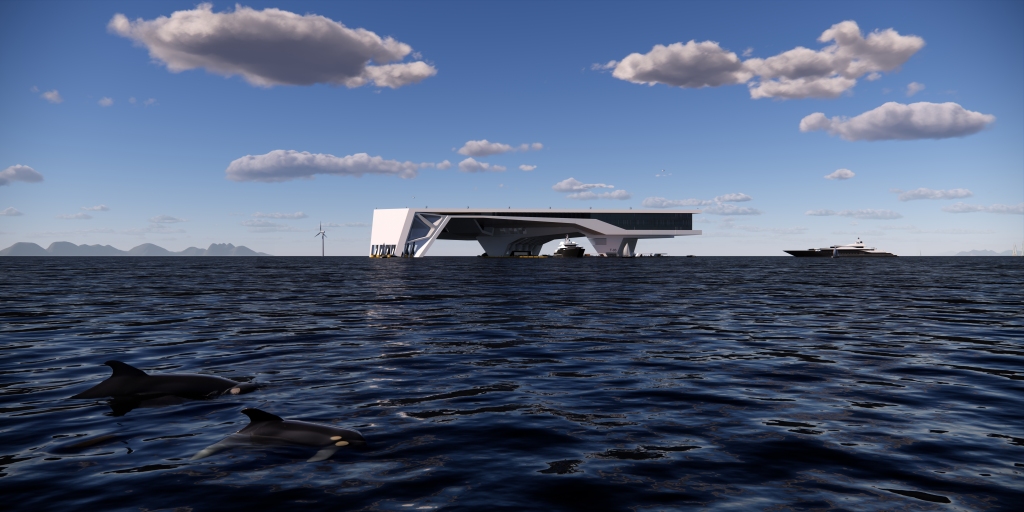
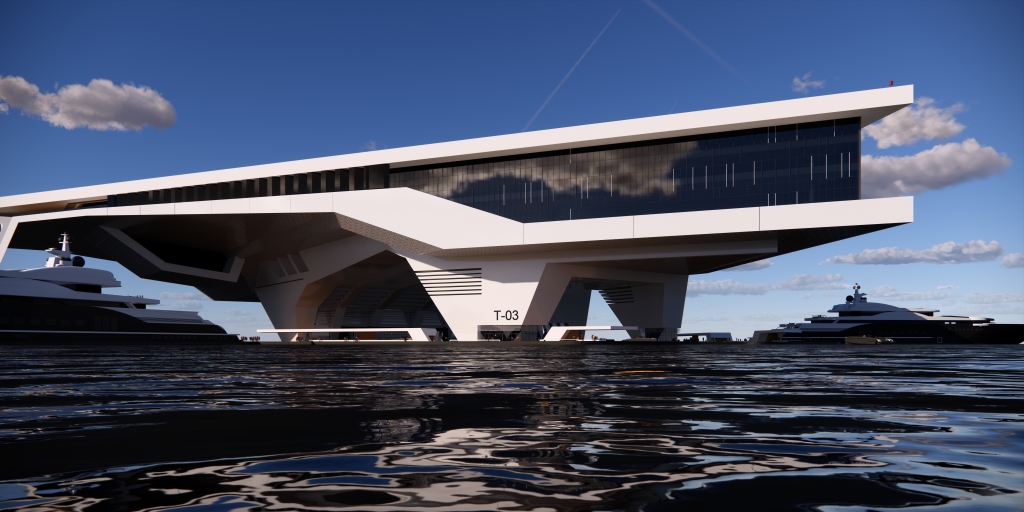
Boat Marina + Electric Charging
A covered and protected boat marina is offering dedicated charging infrastructure, ensuring the seamless operation of electric boats and promoting sustainable marine transportation. These charging stations would offer various charging options, including AC (alternating current) chargers and DC (direct current) fast chargers. Boat owners can safely and easily connect their boats to the charging stations, ensuring their batteries are replenished with clean energy for their next voyage.
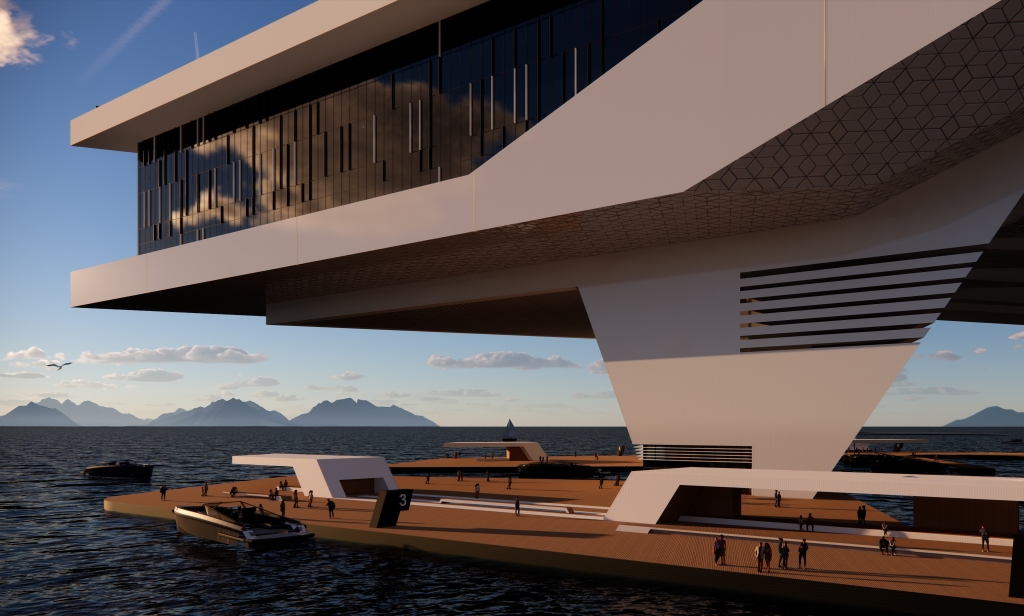
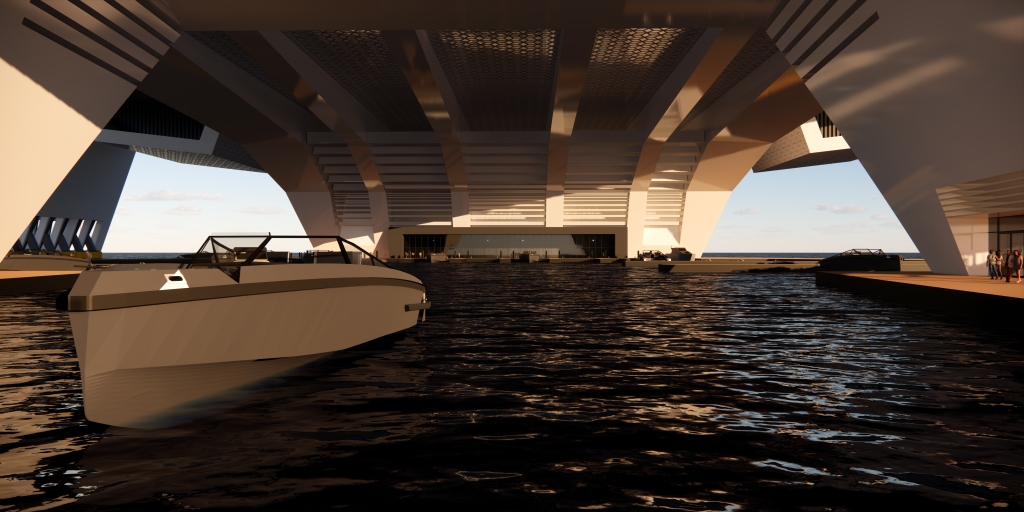
Commercial Opportunities + Visitor Experience
-Observation decks strategically positioned at different levels provide panoramic views of the Aegean Sea.
-Underwater restaurants and bars that offer a one-of-a-kind dining experience, allowing visitors to immerse themselves in the underwater world.
-Outdoors terrace with café/bars
-Space for art installations, cultural events, and educational programs using interactive displays, virtual reality experiences, and educational exhibits to inform and educate visitors about sustainable technologies, marine conservation initiatives, and scientific discoveries.
-Conference Facilities capable of hosting international gatherings and symposiums.
-Diving Centre + Water sports
-Hotel facilities
-Retail
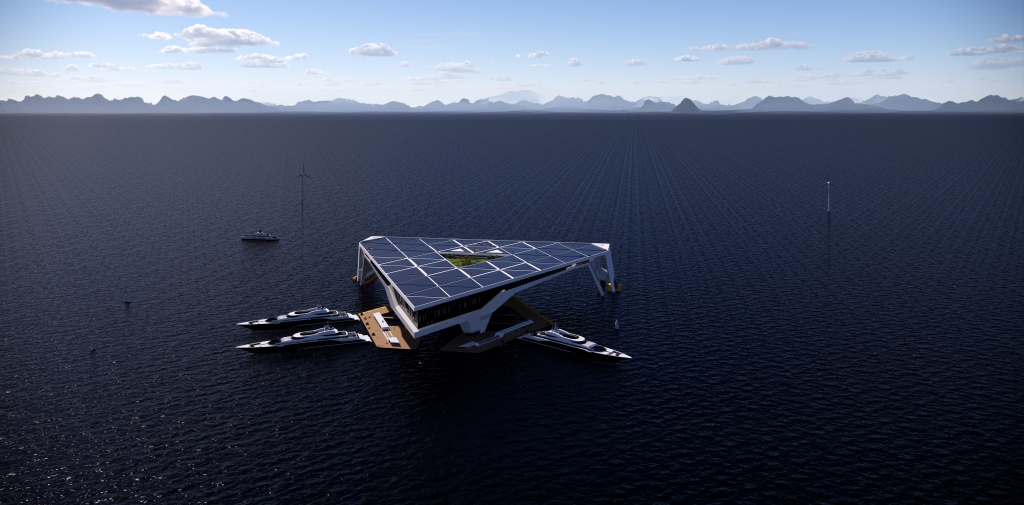
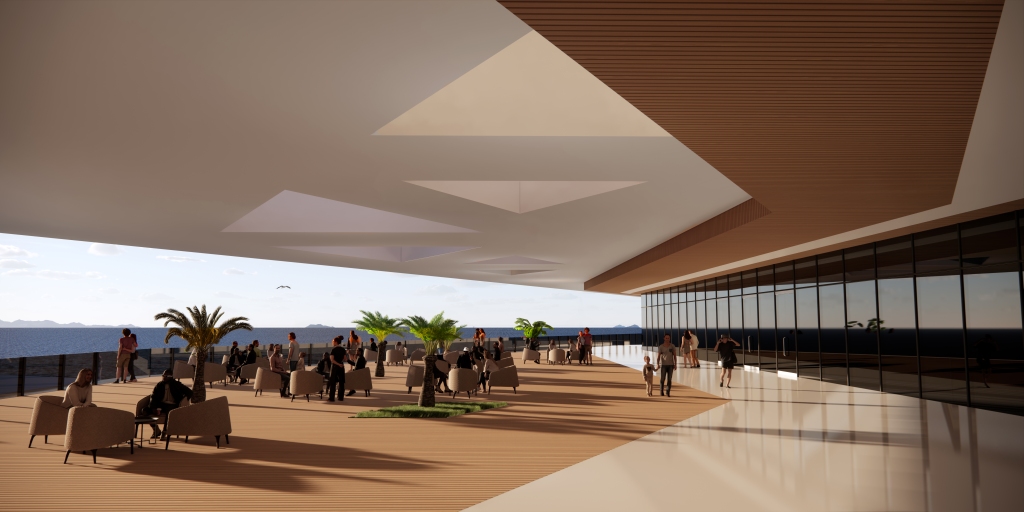
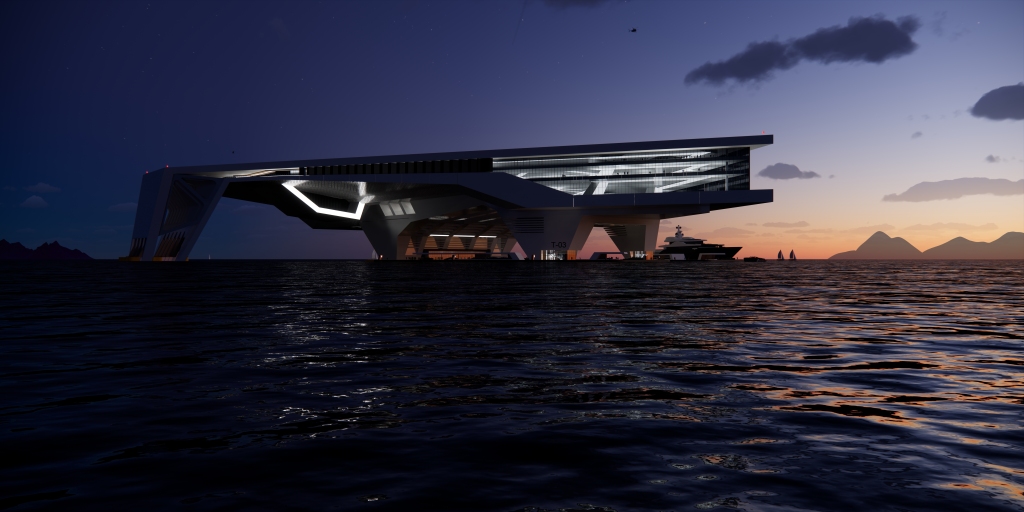
All rights reserved – Copyright Petros Tsoukalas 2023
